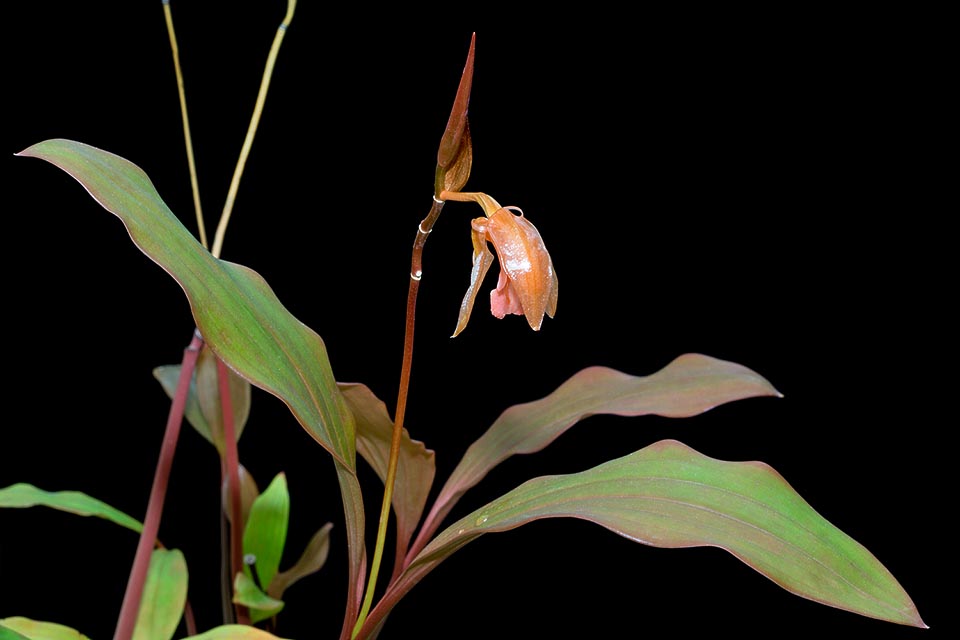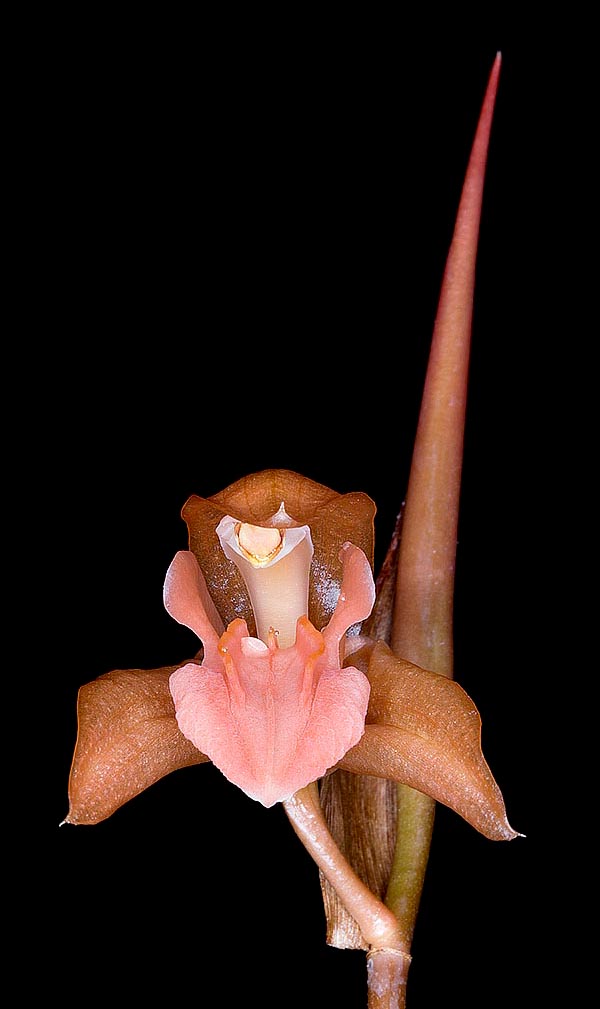Family : Orchidaceae

Text © Pietro Puccio

English translation by Mario Beltramini

Little known, despite beauty and the unusual colour of flowers, Coelogyne kinabaluensis is an epiphyte endemic to Borneo. Woody rhizome with fleshy roots at the nodes © Giuseppe Mazza
The name of the genus is the combination of the Greek adjective “κοῖλος” (koilos) = hollow and of the substantive “γυνή” (gyne) = female, with reference to the concave stigma; the name of the species is the Latin adjective “kinabaluensis” = of Kinabalu, mountain of Borneo where the species has been discovered.

Inflorescence with even 40 flowers of 7-8 cm opening gradually © Giuseppe Mazza
Almost cylindrical pseudobulbs, 20-28 cm long and of 0,5-0,8 cm of diameter, provided at the apex of two elliptical leaves with acuminate apex, plicate with prominent veins, 18-22 cm long and 4-5 cm broad.
Terminal inflorescence with emerging vegetation, erect, zigzagging, 25-40 cm long, bearing up to 40 flowers, of 7-8 cm of diameter, subtended by deciduous bracts, of more or less intense salmon pink colour, opening in succession. It reproduces by seed, in vitro, and by division, with each section provided of at least 3-4 pseudobulbs.
Little known species, in spite of the beauty and the unusual colour of its flowers, needs a semi-shaded position, medium-high temperatures, 20-30 °C in summer, slightly cooler in winter, with lowest night values not under the 16 °C, high humidity, 70-85%, and constant ventilation.
The waterings must be frequent and abundant during the growth, but allowing the substratum to partially dry up before giving water again and avoiding the stagnations on the emerging vegetation easily subject to rottenness, slightly reduced, but without ever allowing the substratum to dry up completely, in winter, utilizing rain water, demineralized or by reverse osmosis.
Fertilizations every 2 weeks from spring to autumn, monthly in winter, utilizing a balanced hydrosoluble product, with microelements, at 1/4 the dosage shown on the package.
It can be mounted on small logs, pieces of bark or rafts covered by sphagnum or cultivated in fairly wide pots or baskets with draining and aerated compost that can be formed by medium sliced bark fragments and sphagnum. The repottings must be done, when strictly necessary, as it does not like to be disturbed, when the new roots do appear.
The species stands in the appendix II of the CITES (species whose trade is ruled at international level).
→ For general notions about ORCHIDACEAE please click here.
